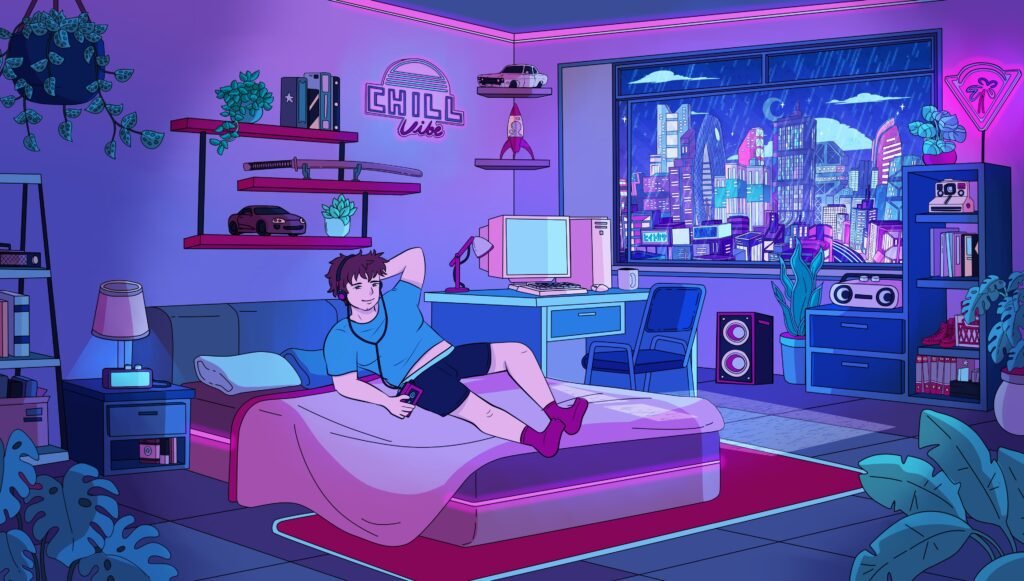Product Description
Chapter 2: Production – Tools, Spaces, and Workflows
Section: Equipment Guide
Voice is intimate.
It’s the breath before the moan. The pause before the punchline. The raw rasp of something real.
It’s also the first thing that gets ruined when you don’t give it room to breathe.
Bad audio breaks immersion faster than bad video. And in a space as personal—and often as vulnerable—as indie adult content, that matters. The good news? You don’t need a studio or a sound engineer. Just the right mic, a quiet setup, and a little practice making your environment work for you.
Let’s get you there.
Why Audio Deserves Your Attention
Here’s what most creators do:
They hit record, let their camera mic pick up the echo off their ceiling, and wonder why everything sounds like it was filmed inside a washing machine.
That’s not you.
Good sound builds trust. It holds attention. Whether you’re camming live, recording a voiceover, or just capturing the rhythm of your breath while you play—your mic is how people experience you when they can’t touch you.
The best part? You don’t have to start with expensive gear. What matters most is knowing what to listen for—and how to make any mic, in any room, work better.
Entry-Level to Pro: Mics That Fit Your Flow
You’ll want to choose a mic based on what kind of content you make most. Here’s a breakdown by budget and use case.
Entry-Level: Plug and Play
- Fifine K669B: A fantastic budget mic that plugs straight into USB. Surprisingly crisp, especially for camming or short clips.
- Smartphone with Lavalier Mic: Add a $15 lav mic for clearer audio on mobile. Clip it to your shirt—huge upgrade over internal mic.
Mid-Tier: Creator Standards
- Blue Yeti or Yeti Nano: A staple for creators. Easy to use, multiple pickup patterns (great for solo or duo work), and works well for both camming and narration.
- Elgato Wave:3: Excellent if you want more control, clean gain, and a software suite that plays nicely with OBS.
High-End: Full Voice Performance
- Shure MV7: A favorite for podcasters, streamers, and voice artists. Has USB and XLR outputs, with a warm, professional tone.
- Rode NT1-A (with interface): Studio-grade, but requires an audio interface like the Focusrite Scarlett. Best for those layering voice over video or doing narrative audio work.
Make the Most of Any Mic
The mic is just one part of the chain. The rest is how you treat the space around it—and your voice within it.
Your Environment Matters
- Soft > Hard: Avoid echo-heavy rooms. Blankets, curtains, or even an open closet full of clothes can dampen reflections.
- Face the Mic: Keep it close to your mouth (6–8 inches), but not directly in front—aim slightly off-axis to avoid plosives.
- Kill Background Noise: Fans, fridges, open windows—all of them register more clearly than you think.
Adjusting the Mic Settings
- On the Device: Use cardioid pickup for solo recording. Lower gain to avoid background hum. Speak confidently, not too quietly.
- In Software: Tools like Adobe Audition or Audacity can help you clean your sound:
- Use noise reduction—but lightly.
- Cut frequencies under ~80Hz if you hear rumbles.
- Compress gently to even out loud and soft parts.
If your voice starts sounding thin, clipped, or robotic, you’ve gone too far. Your imperfections are part of your presence.
When Video Audio Doesn’t Work
Sometimes your camera mic just isn’t enough—or isn’t what you want.
If you’re doing:
- Voiceover narration
- Sound layering (e.g., moans over music)
- Content that mixes quiet and loud scenes
…record your audio separately. Match it in post. It’s easier than you think, and gives you room to experiment. You can even whisper into a mic after the fact, layering the sound under your breathing. Done right, that feels more intimate than anything caught in the moment.
One Small Fix at a Time
You don’t need to sound like a radio station.
You just need to be heard clearly enough to keep someone close.
Start with a mic that suits your budget and space. Learn how your voice responds to the room. Experiment. You’re not building perfection—you’re building presence. That’s what sticks with people.
Next Steps
Your voice is dialed in. Ready to talk visuals?
When you’re ready, move forward to the next page:
Do You Need a DSLR? Creator Camera Options Considered
Previous Section
Next Section
Next Chapter
Return to the Table of Contents





